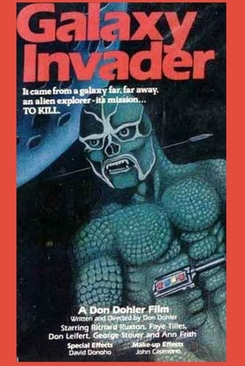
The Columbine High School massacre, often referred to as simply Columbine, was a school shooting and attempted bombing that occurred on April 20, 1999, at Columbine High School in Columbine, Colorado, United States. The perpetrators, twelfth-grade students Eric Harris and Dylan Klebold, murdered twelve students and one teacher; ten were killed in the school library, where Harris and Klebold subsequently died by suicide. Twenty-one additional people were injured by gunshots, and gunfire was exchanged with the police. Another three people were injured trying to escape. The Columbine massacre was the deadliest mass shooting at a K-12 school in U.S. history until December 2012. It is still considered one of the most infamous massacres in the U.S. for inspiring many other school shootings and bombings; the word "Columbine" has since become a byword for modern school shootings. As of 2024, Columbine is still the deadliest school shooting in Colorado and one of the deadliest mass shootings in the United States.

Goof Troop is an American animated sitcom produced by Walt Disney Television Animation. The series focuses on the relationship between single father Goofy and his son, Max, as well as their neighbor Pete and his family. Created by Robert Taylor and Michael Peraza Jr., the main series of 65 episodes aired in first-run syndication from 1992 to 1993 on The Disney Afternoon programming block, while an additional thirteen episodes aired on Saturday mornings on ABC. A Christmas special was also produced and aired in syndication in late 1992.

Bowling for Columbine is a 2002 documentary film written, produced, directed, and narrated by Michael Moore. The documentary film explores what Moore suggests are the primary causes for the Columbine High School massacre in 1999 and other acts of gun violence. He focuses on the background and environment in which the massacre took place and some common public opinions and assumptions about related issues. The film also looks into the nature of violence in the United States, and American violence abroad.

Elephant is a 2003 American psychological drama film written, directed and edited by Gus Van Sant. It takes place in Watt High School, in the suburbs of Portland, Oregon, and chronicles the events surrounding a school shooting, based in part on the 1999 Columbine High School massacre. The film begins a short time before the shooting occurs, following the lives of several characters both in and out of school, who are unaware of what is about to unfold. The film stars mostly new actors, including John Robinson, Alex Frost, and Eric Deulen.

Eric David Harris and Dylan Bennet Klebold were two American high school seniors and mass murderers who perpetrated the Columbine High School massacre at Columbine High School on April 20, 1999, in Columbine, Colorado. Harris and Klebold killed 12 students and one teacher and wounded 24 others. After killing most of their victims in the school's library, they died by suicide. At the time, it was the deadliest high school shooting in U.S. history.

Zero Day is a 2003 American found footage drama film written and directed by Ben Coccio and starring Andre Keuck and Cal Robertson, revolving around a duo planning a school shooting through the perspective of a video filming camera.

The Slumber Party Massacre is a 1982 American slasher film produced and directed by Amy Jones and written by Rita Mae Brown. It is the first installment in the Slumber Party Massacre series, and stars Michelle Michaels, Robin Stille, and Michael Villella. The film follows a high school senior who gathers her friends for a slumber party, unaware that an escaped power drill-wielding killer is loose in the neighborhood.

Super Columbine Massacre RPG! is a role-playing video game created by Danny Ledonne and released in April 2005. The game recreates the 1999 Columbine High School shootings in Columbine, Colorado. Players assume the roles of gunmen Eric Harris and Dylan Klebold and act out the massacre, with flashbacks relating parts of Harris and Klebold's past experiences. The game begins on the day of the shootings and follows Harris and Klebold after their suicides to fictional adventures in perdition.
Not Like Everyone Else is a 2006 television film that aired on Lifetime Television and starred Alia Shawkat, Illeana Douglas and Eric Schweig. It is based on a true story of events that happened to Brandi Blackbear in 1999–2000. This telefilm was shot in Shreveport, Louisiana.
Erin Brown is an American actress. She has starred in over fifty low-budget films as Misty Mundae.

Danny A. Ledonne is an American film director and former video game developer. From 2011 to 2014, he worked as a professor in Film and Media Arts at American University, served on the board of the Southern Colorado Film Commission, and became the director for the 2015 edition of the festival. He is known for the documentary Playing Columbine, about the controversy surrounding his 2005 video game Super Columbine Massacre RPG!.

Galaxy Invader is a 1985 American direct-to-video science fiction film directed and co-written by Baltimore filmmaker Don Dohler. The film's plot centers on an alien who is pursued by hillbillies after his spaceship crash-lands on Earth. The cast is made of entirely non-professional actors, mainly friends and family of Dohler.

"The Nobodies" is a song by American rock band Marilyn Manson. It is the third and final single from their fourth studio album, Holy Wood , released in 2000. The song addresses Eric Harris and Dylan Klebold, perpetrators of the Columbine High School massacre in 1999. The song's title is from a quote by John Lennon's murderer, Mark David Chapman, who once lamented that he "felt like a nobody."

American Yearbook is a 2004 American drama film written, produced, edited, and directed by Brian Ging. While the film itself is finished, and has been shown at various film festivals. The movie was released in December of 2024 on youtube.

Satan's Cheerleaders is a 1977 American comedy horror film directed by Greydon Clark and starring John Ireland, Yvonne De Carlo, and John Carradine.

The Only Way is a 2004 American film about a school shooting directed by David Zimmerman III and Levi Obery. The film is loosely based on the Columbine High School massacre. The film was shot on location in Metamora, Illinois, Washington, Illinois, Pekin, Illinois, and Peoria, Illinois with Metamora Township High School, the same high school from which the film's directors graduated, serving as the principal location.

The Redeemer, also known as The Redeemer... Son of Satan! and Class Reunion Massacre, is a 1978 American horror film directed by Constantine S. Gochis. It follows a group of people trapped inside their high school during a ten-year reunion who are being killed off by a mysterious killer known as The Redeemer.

I'm Not Ashamed is a 2016 American biographical drama film directed by Brian Baugh and based on the journals of Rachel Scott, the first victim of the 1999 Columbine High School massacre in Columbine, Colorado. Scott, played by Masey McLain, serves as the protagonist of the film; the story of both gunmen, Eric Harris and Dylan Klebold, is intertwined with hers and this indicates the two were the antagonists. The film was distributed by Pure Flix Entertainment. It received generally negative reviews from critics and audiences. It performed poorly at the box office as well, with revenue of $2.1 million compared to the $1.5 million budget of the film.

The Columbine effect is the legacy and impact of the Columbine High School massacre ("Columbine"), which occurred on April 20, 1999, at Columbine High School in Columbine, Colorado. The shooting has had an effect on school safety, policing tactics, prevention methods, and inspired numerous copycat crimes, with many killers taking their inspiration from Eric Harris and Dylan Klebold by describing the two perpetrators as being martyrs or heroes.

A shot-on-video (SOV) film, also known as a shot-on-VHS film or a camcorder film, is a film shot using camcorders and consumer-grade equipment, as opposed to film stock or high-end digital movie cameras.


















